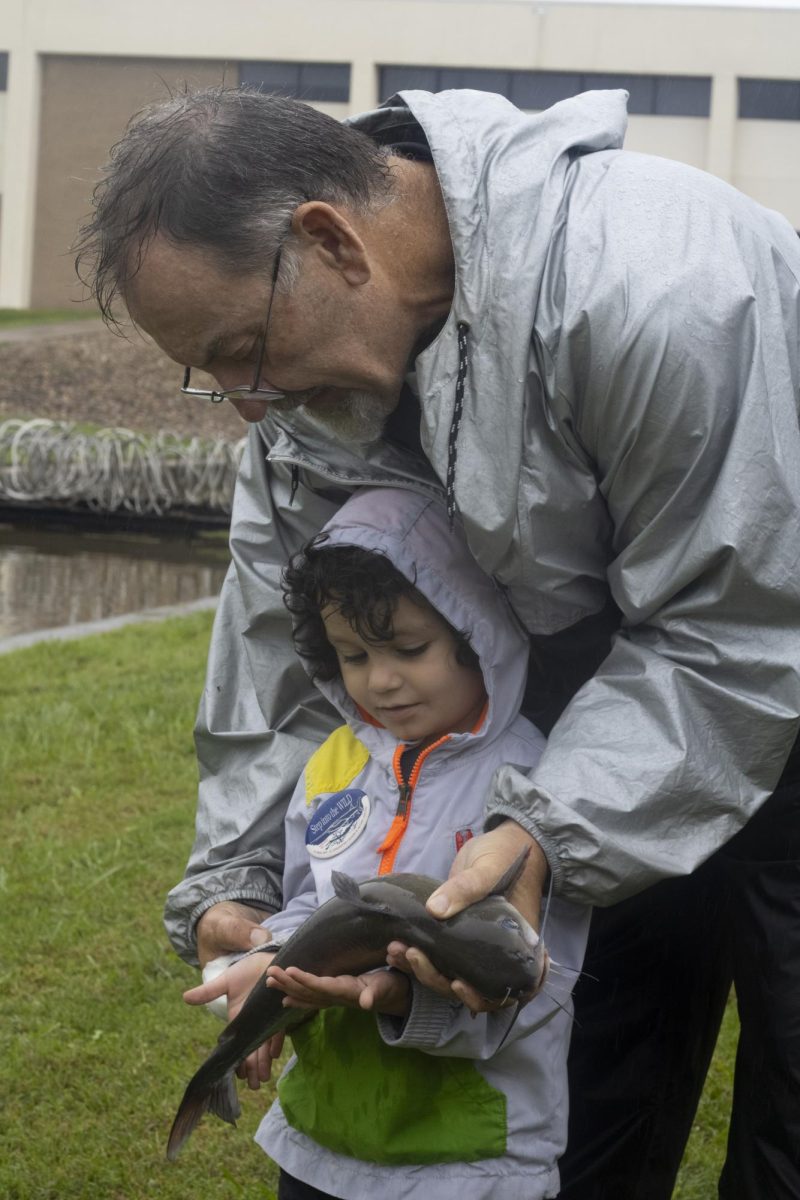A 1-800 number flashed across monitors in studio A at WSIU as a new age in recruiting graduate students began Friday morning.
January 30, 1995
The infomercial-styled teleconference was aimed at historically black colleges and universities across the Southeastern United States.
Ben Shepherd, vice president of academic affairs and provost, said the teleconference was an excellent recruiting opportunity for the University as well as the College of Mass Communication and Media Arts.
It was viewed as an economic and efficient way to communicate with historically black universities, he said.
Advertisement
The purpose of the graduate program video conference was to allow prospective graduate students from historically black colleges and universities access to information concerning financial aid and academic opportunities, as well as to describe the educational environment.
Michael Starr, chairman of radio-television, and Candice Isberner, instructional TV director, came up with the idea two years ago according to assistant dean Bill Elliott.
Executive producer Anita L. Rife said it was a campus-wide effort that made the teleconference idea a reality.
Joe S. Foote, dean of the College of Mass Communication and Media Arts, and Elliott invited the doctoral candidate, an assistant professor at the University of Northern Colorado, to help coordinate the program.
A panel made up of graduate program directors was formed to field questions coming in from remote locations. The 1-800 number brightened the bottom third of the TV screen to signal viewers to call in.
Callers inquired about professional hands-on opportunities, financial- aid availability and climactic conditions in the region. Questions were
directed to those best suited to answer.
Advertisement*
Panel member Roya-Akhavan Majid, the graduate program
director of the school of journalism, elaborated on the internship and externship laboratories available at the University for a caller inquiring about pre-professional opportunities.
Associate dean of the graduate school, Harry Daniels, revealed to callers the two-year financial aid guarantees the program provides for students who are involved in assistantships.
Rife, who began her doctoral studies at SIUC in 1988, joined graduate students Habib Faisal, of cinema and photography and Leslie D. Thomas, of radio-television on a side panel provided by the college that exposed students’ views of the programs.
According to Shepherd, the teleconference may replace traditional recruiting techniques with the high-tech communication methods utilized by the University. Informational literature packets and visiting representatives from the University are the traditional recruiting techniques. The teleconference provided an opportunity for interested parties to confer directly with the dean of the schools as well as with departmental heads. Schools were selected to participate in the teleconference with help from a study titled, Overlooked Faculty Resources in Historically Black Colleges. The study was completed and published in the Journalism Educator in 1990 by SIUC professor Anna Paddon. Lona Cobb, a doctoral student at SIUC at the time, isolated historically black colleges with journalism and media arts programs. Engineer of broadcasting services Robert Henderson, with his knowledge of available satellite down-link locations, completed the list of participants and expertise involved in creating the teleconference.
Seven institutions were on the receiving end of satellite communications originating from Carbondale. Included in the teleconference were Alcorn State University in Lorman, Mississippi; from Jackson, Mississippi, Jackson State University; Morgan State University in Baltimore, Maryland; Shaw University in Raleigh, North Carolina; from Tuscaloosa, Alabama, Stillman College; Howard University from Washington, D.C.; and Alabama State University from Montgomery.
Advertisement








